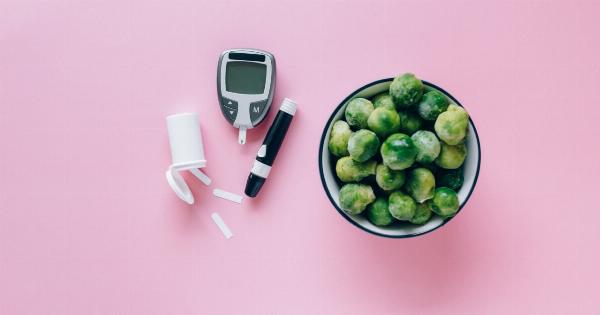Proper meal timing plays a crucial role in maintaining overall health and well-being. Recent studies have suggested that the length of our lunchtime break may have an impact on the risk of developing diabetes.
As the incidence of diabetes continues to rise globally, understanding and addressing the factors that contribute to its development becomes even more critical.
The Prevalence of Diabetes
Diabetes is a chronic condition characterized by high blood sugar levels, resulting from either inadequate insulin production or the body’s inability to use insulin effectively.
According to the World Health Organization (WHO), an estimated 422 million adults worldwide were living with diabetes in 2014, and this number is projected to rise to 642 million by 2040.
Meal Timing and Blood Sugar Control
Meal timing is an important aspect of diabetes management, as it directly affects blood sugar levels.
Studies have shown that spacing out meals evenly throughout the day, rather than eating one or two large meals, can help maintain stable blood sugar levels. It allows the body to process the carbohydrates more effectively, preventing fluctuations in blood glucose levels.
The Link Between Lunchtime Length and Diabetes Risk
Recent research has investigated the relationship between lunchtime length and the risk of developing diabetes. A study conducted by Journal of Nutrition analyzed the eating patterns of a group of adults over several years.
The results showed that those who had shorter lunch breaks, typically less than 30 minutes, had a significantly higher risk of developing type 2 diabetes compared to those who had longer lunch breaks.
Possible Explanations for the Link
One possible explanation for this link is the impact of stress on the body. Short lunch breaks often mean rushing through meals or skipping them altogether, causing stress levels to rise.
Stress triggers the release of hormones like cortisol, which can interfere with insulin production and lead to higher blood sugar levels. Moreover, stress eating or making unhealthy food choices during rushed lunches further compounds the risk.
Another factor to consider is the composition of the meals consumed during lunchtime.
People who have shorter lunch breaks may opt for quick, convenient, and often unhealthy food options that are high in processed sugars and unhealthy fats, increasing the risk of diabetes. On the other hand, individuals with longer lunch breaks may have more time to prepare and consume balanced meals, leading to better blood sugar control.
Strategies to Reduce Diabetes Risk
Given the potential impact of lunchtime length on diabetes risk, it is important to prioritize adequate breaks and optimize meal choices during this time. Here are some strategies to reduce the risk of developing diabetes:.
1. Prioritize Mindful Eating
Avoid rushing through meals and instead practice mindful eating. Take time to savor each bite, chew thoroughly, and pay attention to feelings of hunger and fullness. This can help prevent overeating and make healthier choices.
2. Plan and Prepare Meals
Invest time in planning and preparing nutritious meals for lunch. This reduces the temptation to rely on unhealthy, readily available options. Consider meal prepping on weekends to ensure you have a balanced lunch during the busy workweek.
3. Include Protein and Fiber
Opt for meals that are high in protein and fiber content. These nutrients promote feelings of fullness and help regulate blood sugar levels. Incorporate lean proteins, whole grains, and plenty of vegetables into your lunchtime meals.
4. Optimize Break Time
Ensure that you have a sufficient lunch break duration. Use this time to step away from your desk, engage in physical activity, or practice relaxation techniques. This can help reduce stress levels and improve overall well-being.
5. Seek Support from Colleagues
Encourage your colleagues or workplace to prioritize healthy lunch breaks. Consider organizing group activities during lunch, such as walks or exercise classes, to foster a supportive and health-conscious environment.
6. Avoid Unhealthy Snacking
Avoid mindlessly reaching for unhealthy snacks in between meals. Instead, keep nutritious snacks like fresh fruits, raw nuts, or yogurt at your desk to satisfy hunger pangs without compromising your health goals.
7. Stay Hydrated
Keeping hydrated throughout the day is crucial for maintaining overall health. Drink plenty of water during and outside of lunchtime to support digestion and promote optimal bodily functions.
8. Stay Informed
Stay up to date on the latest research regarding meal timing and diabetes risk. By remaining informed, you can make informed decisions and adjustments to your eating habits.
9. Consult a Medical Professional
If you have concerns about your diabetes risk or need personalized advice, consult a medical professional or a registered dietitian. They can provide tailored recommendations and support to help you reduce your risk.
The Bottom Line
While the exact mechanisms and specific causality between lunchtime length and diabetes risk require further investigation, the available evidence suggests a strong connection.
By prioritizing adequate lunch breaks, mindful eating, and making healthier meal choices, you can reduce your risk of developing diabetes and improve your overall health.

























